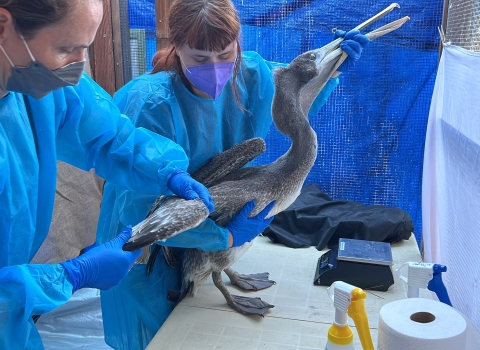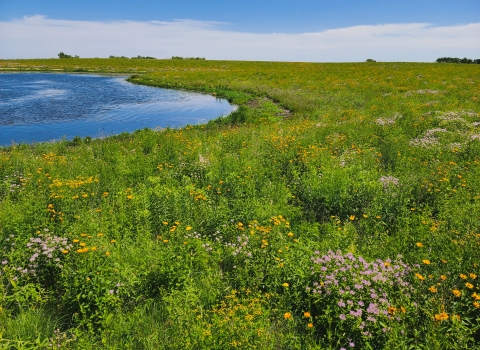DENVER – Thanks in large part to successful partnerships with landowners that have helped recover the species, today the U.S. Fish and Wildlife Service announced plans to remove the Colorado butterfly plant from the Federal List of Endangered and Threatened Plants and to remove designated critical habitat. The species is a member of the evening primrose family and is found primarily in southeastern Wyoming, northcentral Colorado, and western Nebraska.
“Today’s announcement is really a story about the power of partnerships in achieving conservation success,” said Noreen Walsh, Mountain-Prairie Regional Director for the Service. “By working together, we have achieved recovery of a once-imperiled plant species while maintaining the ongoing land management needs of our partners.”
Since the species’ listing in 2000, the Service worked in partnership with ranchers and private landowners to develop voluntary agreements that protect its habitat while continuing to manage these private lands for livestock. The Service also partnered with the City of Fort Collins Natural Areas Department and F.E. Warren Air Force Base to protect Colorado butterfly plant populations on lands under their management.
After an extensive review using the best available scientific information, the Service determined that threats to the species have been sufficiently minimized, and the species’ population has increased since the time of listing. This along with strong local conservation partnerships led the Service to conclude that the Colorado butterfly plant is no longer likely to become endangered in the foreseeable future.
To ensure the plant is protected well into the future, the Service has developed a draft post-delisting monitoring plan, which outlines what steps will be taken to monitor the species in the years following delisting.
The Colorado butterfly plant is a perennial herb endemic to moist soils in wet meadows of flood plain areas. This plant occurs in southeastern Wyoming, north-central Colorado, and western Nebraska between elevations of 5,000 and 6,400 feet. The species is typically found in wetland habitats along meandering stream channels on the high plains. The plant prefers open habitat that is not substantially overgrown by other vegetation.
The proposed delisting rule and delisting monitoring plan will publish in the Federal Register on Friday, June 8, 2018. The Service will accept comments regarding the proposal for 60-days after publication. Interested parties can submit comments electronically at http://www.regulations.gov. In the search box, enter docket number FWS–R6–ES– 2018-0008, and then click on the “Comment Now!” button.
Comments will also be accepted via U.S. mail or hand-delivery: Public Comments Processing, Attn: Docket No. FWS–R6–ES– 2018-0008 U.S. Fish and Wildlife, MS: BPHC, 5275 Leesburg Pike, Falls Church, VA 22041-3803. Please note that submissions merely supporting or opposing a potential delisting, without supporting documentation, will not be considered in making a determination.
The mission of the U.S. Fish and Wildlife Service is working with others to conserve, protect, and enhance fish, wildlife, plants, and their habitats for the continuing benefit of the American people. We are both a leader and trusted partner in fish and wildlife conservation, known for our scientific excellence, stewardship of lands and natural resources, dedicated professionals, and commitment to public service.
Connect with our Facebook page at http://www.facebook.com/USFWSMountainPrairie, follow our tweets at http://twitter.com/USFWSMtnPrairie, watch our YouTube Channel at http://www.youtube.com/usfws and download photos from our Flickr page at http://www.flickr.com/photos/usfwsmtnprairie/.


